THYRISTOR MODULES
| Features | Typical Application | PDDN-Notes |
|
|
|
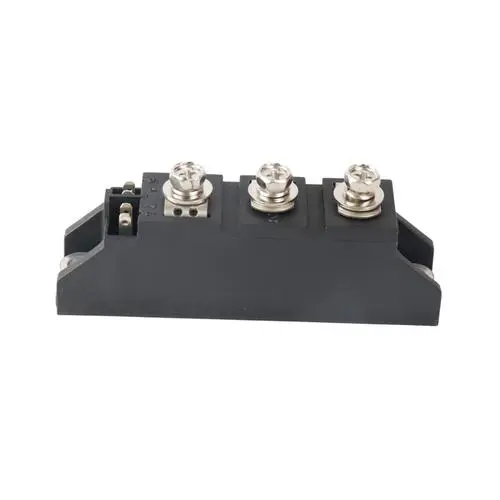
| Type | IT[AV] [A] | VDRM/VRRM [V] | IDRM/IRRM [mA] | IGT [mA] | VGT [V] | IH [mA] | dv/dt [V/us] | di/dt [A/us] | ITSM [kA] | Datasheet | Offer |
|---|---|---|---|---|---|---|---|---|---|---|---|
| PDDN-MTx26 | 26 | 600-1800 | 8 | 100 | 2.5 | 150 | 800 | 50 | 0.55 | Request | |
| PDDN-MTx40 | 40 | 600-1800 | 8 | 100 | 2.5 | 150 | 800 | 50 | 1 | Request | |
| PDDN-MTx55 | 55 | 600-1800 | 8 | 100 | 2.5 | 150 | 800 | 50 | 1.25 | Request | |
| PDDN-MTx55H | 55 | 1900-3000 | 10 | 150 | 3 | 150 | 800 | 50 | 1.15 | Request | |
| PDDN-MTx70 | 70 | 600-1800 | 10 | 100 | 2.5 | 150 | 800 | 50 | 1.6 | Request | |
| PDDN-MTx70H | 70 | 1900-3000 | 12 | 150 | 3 | 150 | 800 | 50 | 1.6 | Request | |
| PDDN-MTx90 | 90 | 600-1800 | 10 | 100 | 2.5 | 150 | 800 | 100 | 2 | Request | |
| PDDN-MTx90H | 90 | 1900-3000 | 15 | 150 | 3 | 150 | 800 | 100 | 2 | Request | |
| PDDN-MTx110 | 110 | 600-1800 | 12 | 100 | 2.5 | 150 | 800 | 100 | 2.4 | Request | |
| PDDN-MTx110H | 110 | 1900-3000 | 20 | 150 | 3 | 150 | 800 | 100 | 2.4 | Request | |
| PDDN-MTx135 | 135 | 600-1800 | 10 | 100 | 2.5 | 150 | 800 | 100 | 3.8 | Request | |
| PDDN-MTx135H | 135 | 1900-3000 | 22 | 150 | 3 | 150 | 800 | 100 | 3.8 | Request | |
| PDDN-MTx160 | 160 | 600-1800 | 20 | 150 | 2.5 | 150 | 800 | 100 | 5.4 | Request | |
| PDDN-MTx160H | 160 | 1900-3000 | 25 | 150 | 3 | 150 | 800 | 100 | 5.4 | Request | |
| PDDN-MTx182 | 182 | 600-1800 | 25 | 150 | 2.5 | 150 | 800 | 100 | 5.8 | Request | |
| PDDN-MTx182H | 182 | 1900-3000 | 30 | 150 | 3 | 150 | 800 | 100 | 5.8 | Request | |
| PDDN-MTx200 | 200 | 600-1800 | 30 | 180 | 2.5 | 150 | 800 | 100 | 7.2 | Request | |
| PDDN-MTx200H | 200 | 1900-3000 | 35 | 180 | 3 | 150 | 800 | 100 | 7.2 | Request | |
| PDDN-MTx250 | 250 | 600-1800 | 30 | 180 | 2.5 | 150 | 800 | 100 | 8.5 | Request | |
| PDDN-MTx250H | 250 | 1900-3000 | 40 | 180 | 3 | 150 | 800 | 100 | 8.5 | Request | |
| PDDN-MTx300 | 300 | 600-1800 | 40 | 180 | 2.5 | 150 | 800 | 100 | 9.3 | Request | |
| PDDN-MTx300H | 300 | 1900-3000 | 50 | 180 | 3 | 150 | 800 | 100 | 9.3 | Request | |
| PDDN-MTx350 | 350 | 600-1800 | 40 | 180 | 2.5 | 150 | 800 | 100 | 11 | Request | |
| PDDN-MTx400 | 400 | 600-1800 | 40 | 200 | 3 | 200 | 800 | 100 | 12 | Request | |
| PDDN-MTx500 | 500 | 600-1800 | 40 | 200 | 3 | 200 | 800 | 100 | 16 | Request | |
| PDDN-MTx400W | 400 | 600-1800 | 40 | 200 | 3 | 200 | 800 | 100 | 8.5 | Request | |
| PDDN-MTx500W | 500 | 600-1800 | 40 | 200 | 3 | 200 | 800 | 100 | 11 | Request | |
| PDDN-MTx600W | 600 | 600-1800 | 40 | 200 | 3 | 200 | 800 | 100 | 13 | Request | |
| PDDN-MTx800W | 800 | 600-1800 | 40 | 200 | 3 | 200 | 800 | 100 | 16 | Request | |
| PDDN-MTx800 | 800 | 600-1800 | 40 | 200 | 3 | 200 | 800 | 100 | 16 | Request | |
| PDDN-MTx1000W | 1000 | 600-1800 | 50 | 200 | 3 | 200 | 800 | 100 | 20 | Request | |
| PDDN-MTx1000 | 1000 | 600-1800 | 60 | 200 | 3 | 200 | 800 | 100 | 20 | Request | |
| PDDN-MTx1200 | 1200 | 600-1800 | 70 | 200 | 3 | 200 | 800 | 100 | 24 | Request |
Overview of Thyristor Module
A thyristor module is a semiconductor power electronic device composed of multiple integrated thyristors, mainly used for controlling and regulating AC or DC power sources. Its advantages include high voltage resistance, high current, and low conduction voltage, which are widely used in fields such as power control, motor speed regulation, and switching power supplies. Compared with a single thyristor, thyristor modules can improve system reliability, reduce volume, and lower costs. There are various types, which can be divided into ordinary, bidirectional, switchable, etc., according to their functions. They can be divided into plug-in and SMT types according to their packaging forms. When using, attention should be paid to parameters such as working voltage, current, and heat dissipation, and appropriate driving and control circuits should be selected. With the development of power electronics technology, the application prospects of thyristor modules are broad.
Characteristics of Thyristor Module:
1. High reliability: The thyristor module adopts multiple stable semiconductor components, ensuring its long-term reliability.
2. Low power consumption: The thyristor module adopts advanced circuit design and manufacturing technology in the control circuit, achieving efficient control while reducing its energy consumption.
3. Quick response: The control circuit of the thyristor module has a fast response speed and can quickly control the power output.
4. High efficiency: The thyristor module adopts advanced circuit design and manufacturing technology, which is highly efficient.
5. High integration: The thyristor module integrates and packages multiple thyristors together, improving integration while reducing volume and weight.
6. Easy to use: The thyristor module is easy to position and use, and users can choose according to their actual needs.
7. High voltage resistance and high current: The thyristor module can withstand the impact of high voltage and high current and has high reliability.
8. Easy to maintain: The failure rate of the thyristor module is low, and it is easy to repair and replace.
9. Good temperature adaptability: The thyristor module can operate generally over an extensive temperature range and has strong environmental adaptability.
Application of Thyristor Module
1. Power control: The thyristor module can be used in various power control equipment, such as frequency converters, speed controllers, motor controllers, etc. These devices utilize thyristor modules to achieve functions such as rectification and inversion of AC power, thereby controlling parameters such as speed, position, and temperature of motors, heaters, and other equipment.
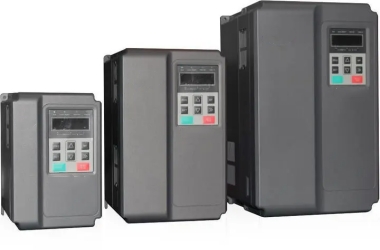
(Thyristor module for frequency converter)
2. Motor drive: Thyristor modules are also widely used in the field of motor drive, such as the drive of AC motors, DC motors, and stepper motors. By controlling the conduction and shutdown of the thyristor module, the functions of starting, speed regulation, and braking of the motor can be achieved.
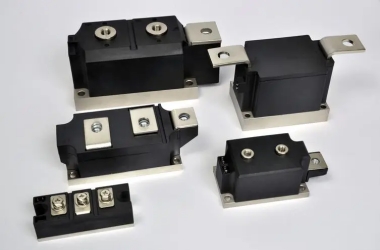
(Thyristor module)
3. Switching power supply: The thyristor module can be used in the design of various switching power supplies, such as chargers, adapters, inverters, etc. By adjusting the conduction and turn-off times of the thyristor module, the power supply can achieve stable voltage, current, and switching functions.
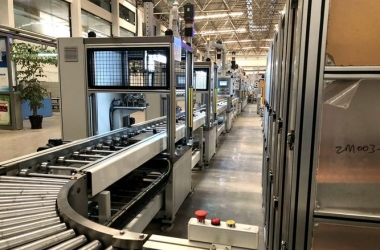
(Thyristor modules used in automatic production lines)
4. Industrial automation: In the field of industrial automation, thyristor modules can be used in various automation equipment and control systems, such as robots, CNC machine tools, automatic production lines, etc. By controlling the thyristor module, precise movement and positioning of the equipment can be achieved.
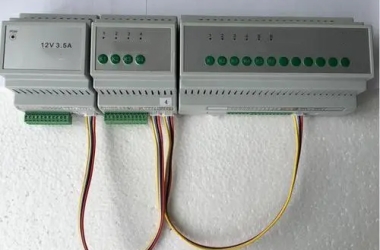
(Thyristor modules used in lighting control systems)
5. Lighting control: The thyristor module can be used in lighting control systems, such as dimming and flicker control of LED lamps. By adjusting the conduction and turn off of the thyristor module, the brightness adjustment and dynamic effect of the light can be achieved.

Company Profile
PDDN Photoelectron Technology Co., Ltd. (sales@pddn.com) is a high-tech enterprise focusing on the manufacturing, R&D, and sales of power semiconductor devices. Since its establishment, the company has been committed to providing high-quality, high-performance semiconductor products to customers worldwide to meet the needs of the evolving power electronics industry.
It accepts payment via Credit Card, T/T, West Union, and Paypal. PDDN will ship the goods to clients overseas through FedEx and DHL, by sea, or by air. Please inquire if you want a high-quality Thyristor module; we will help.
Payment Methods of Thyristor Module
L/C, T/T, Western Union, Paypal, Credit Card etc.
Shipment of Thyristor Module
By sea, by air, by express, as customers request.
Storage Conditions for the Thyristor Module
1. Working temperature: -20 ℃ to 55 ℃.
2. Storage and transportation temperature: -40 ℃ to 85 ℃.
3. Relative humidity: 5% to 95%, without condensation.
4. Harmonic requirements: ≤ 10%.
5. Atmospheric pressure: 80KPa~110KPa.
6. Altitude:<2000m.
7. Earthquake intensity:<8 levels.
8. It is prohibited to use in gas or other media environments that may damage the insulation of the circuit or pose a risk of explosion.
FAQ
Q1
What is the working principle of a thyristor module?
Re:The core of a thyristor module consists of multiple thyristor components that are integrated and packaged together. Thyristors are semiconductor devices that operate based on the PN junction characteristics of semiconductors. When the thyristor module is subjected to a forward voltage, its internal PN junction will conduct, forming a current channel. When subjected to reverse voltage, the PN junction will cut off and block the current. By controlling the triggering signal of the thyristor, its conduction and cut-off states can be controlled, thereby achieving control and regulation of AC or DC power supply.
Q2
What are the types of thyristor modules, and what are the differences between them?
Re:According to functional and application requirements, thyristor modules can be divided into ordinary thyristor modules, bidirectional thyristor modules, switchable thyristor modules, etc. Standard thyristor modules can only control current in one direction and are suitable for one-way control circuits. The bidirectional thyristor module can handle current in both directions and is ideal for bidirectional control circuits. The switchable thyristor module can turn off the current on its own without the need for external triggering signals.
In addition, according to the packaging form, thyristor modules can be divided into plug-in and SMT types. Plug-in thyristor modules are suitable for traditional circuit board installation methods. In contrast, SMT thyristor modules are ideal for surface mount technology—the choice of which kind of thyristor module depends mainly on the application scenario and circuit design requirements.
Q3
How do you choose a suitable thyristor module?
Re:Select a thyristor module that can withstand the corresponding voltage and current requirements based on the actual circuit voltage and current requirements. Select normal, bidirectional, or switchable thyristor modules according to control requirements. Choose plug-in or SMT thyristor modules based on circuit board design and production process. On the premise of meeting performance requirements, choose a thyristor module with high cost-effectiveness. Considering the stability and lifespan of the thyristor module, select a reliable brand and model that has undergone quality certification and testing.
Q4
What issues should be noted when using thyristor modules?
Re:Ensure that the operating voltage and current of the thyristor module do not exceed its rated value to avoid overload and thermal damage. Design effective heat dissipation based on the heating characteristics of the thyristor module to prevent performance degradation or damage caused by overheating. Provide suitable driving circuits and triggering signals for the thyristor module to ensure its regular operation. Pay attention to the impedance matching of the driving circuit and the stability and reliability of the signal. In some applications, it is necessary to ensure the safe isolation of the thyristor module from other circuits to prevent potential electrical shock hazards.
Q5
What are the applications of thyristor modules in energy conservation and emission reduction?
Re:Thyristor modules are widely used in energy conservation and emission reduction. For example, in the field of motor control, using thyristor modules to achieve speed control of motors can reduce energy consumption and improve energy utilization efficiency. In the power system, using thyristor modules for reactive power compensation and harmonic control can reduce energy consumption and pollution to the power grid. In addition, in fields such as LED lighting and new energy inverters, thyristor modules also play an essential role in helping to achieve energy conservation and emission reduction goals.
Opening Time
- Sunday – Friday: 09:00am – 10:30pm
- Saturday: 10:00am – 02:00pm
Contact Info.
- Email: sales@pddn.com
- Mobile: +86 18837951818
Contact Address
- Tongrun photoelectron, 3rd Floor, Nanshan Science Park, Nanshan District, Shenzhen, Guangdong, China
